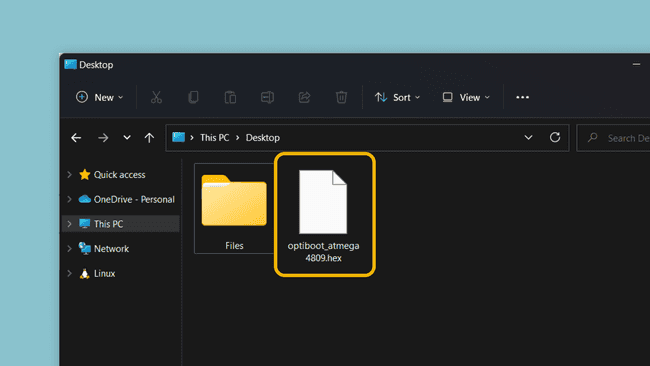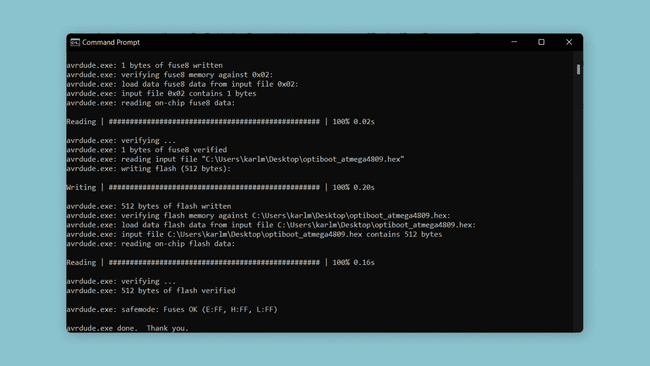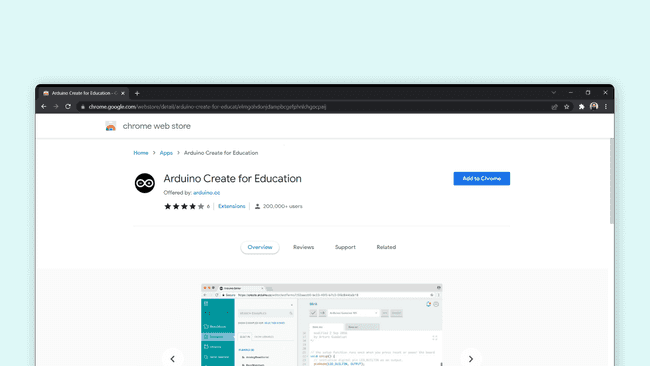UNO WiFi Rev 2 Chromebook Setup
A quick tutorial on how to setup your UNO WiFi Rev 2 board with a Chromebook, using the Web Editor & the Arduino Chrome App.
Introduction
This tutorial is only relevant for Chromebook users that uses an Arduino UNO WiFi Rev 2 board.
The UNO WiFi Rev 2 is the connected version of the classic UNO board. If you are using a Chromebook, setting up your board is a bit different for this particular board:
- You will need to upgrade the firmware using either a Windows/Mac/Linux computer, prior to programming it via a Chromebook. Detailed instructions are provided in this tutorial, and the process only takes a few minutes!
- It is only possible to use the Web Editor, an online IDE that is part of the Arduino Cloud.
Goals
The goals of this project are:
- Learn how to upgrade the firmware on your UNO WiFi Rev 2, so it can be used with a Chromebook.
- Learn how to install the Arduino Create for Education app from Chrome Web Store.
- Learn how to upload a sketch to your board using a Chromebook and the Web Editor.
Hardware & Software Needed
- AVRDUDE (instructions provided in the next section for each OS).
- Arduino Web Editor.
- Arduino Create for Education (Chrome Web Store)
- Arduino UNO WiFi Rev 2.
Upgrading Firmware
Since Chromebooks cannot run executables, the firmware upgrade for the UNO WiFi Rev 2 needs to be done through a Windows/Mac/Linux computer.
First download the optiboot_atmega4.hex file, and move it to your Desktop folder.

Connect your UNO WiFi Rev2 board to your computer and follow the instructions for each operative system below.
It is important that you move the
file to your desktop folder, otherwise the following commands won't work.optiboot_atmega4.hex
Mac
1. Download the AVRDUDE tool for Mac (.zip file) and unzip it to your Desktop folder.
2. Open a terminal, and run the following command:
1/Users/$(whoami)/Desktop/avrdude/bin/avrdude -C/Users/$(whoami)/Desktop/avrdude/etc/avrdude.conf -v -patmega4809 -cxplainedmini_updi -Pusb -b115200 -e -D -Ufuse2:w:0x01:m -Ufuse5:w:0xC9:m -Ufuse8:w:0x02:m -Uflash:w:/Users/$(whoami)/Desktop/optiboot_atmega4809.hex:iWindows
1. Download the AVRDUDE tool for Windows (.zip file) and unzip it to your Desktop folder.
2. Open a command prompt (CMD), and run the following command:
1"%userprofile%/Desktop/avrdude/bin/avrdude.exe" -C "%userprofile%/Desktop/avrdude/etc/avrdude.conf" -v -patmega4809 -cxplainedmini_updi -Pusb -b115200 -e -D -Ufuse2:w:0x01:m -Ufuse5:w:0xC9:m -Ufuse8:w:0x02:m -Uflash:w:%userprofile%\Desktop\optiboot_atmega4809.hex:iLinux
1. Download the AVRDUDE tool for Linux (.zip file) and unzip it to your Desktop folder.
2. Open a terminal, navigate to your root directory.
1cd /3. Run the following command:
1/Users/$(whoami)/Desktop/avrdude/bin/avrdude -C/Users/$(whoami)/Desktop/avrdude/etc/avrdude.conf -v -patmega4809 -cxplainedmini_updi -Pusb -b115200 -e -D -Ufuse2:w:0x01:m -Ufuse5:w:0xC9:m -Ufuse8:w:0x02:m -Uflash:w:/Users/$(whoami)/Desktop/optiboot_atmega4809.hex:iExpected Outcome
This will start a process of uploading the
.hex
Now that your firmware is upgraded, you should see your board blinking (1 second off, followed by a quick blink). This is another proof that it was successful. You can now disconnect your board, and plug it into your Chromebook.
Check AVRDUDE Installation
The above commands utilizes a tool called AVRDUDE, which is included in each version of the IDE. To check whether it is accessible on your computer, you can run the following commands.
Windows:
1"%userprofile%/Desktop/avrdude/bin/avrdude.exe"Mac:
1/Users/$(whoami)/Desktop/avrdude/bin/avrdudeLinux:
1/Users/$(whoami)/Desktop/avrdude/bin/avrdudeTroubleshoot
If the command fails to upgrade the firmware, please make sure that:
- AVRDUDE is accessible (see above instructions). The commands are designed to look for the tool in the
folder, so it will need to be unzipped there.Desktop - That you are using a Windows/Mac/Linux computer (remember, this cannot be performed on a Chromebook).
- That you have the
file in the Desktop folder. The command is written to look for it in that specific folder, so if it is not present, it will not work..hex
Install Arduino App (Chrome Store)
To program your Arduino via a Chromebook, you will need the Arduino Create for Education app. This is downloaded and installed via the Chrome Web Store.

If you have previously installed the app, make sure your version is up to date.
Web Editor
To use the Web Editor, you will need to be logged into your Arduino account. If you don't have an account, you will need to register one.
1. Head over to the Web Editor.
2. Create a new sketch, and write your program.
3. When you want to upload, connect your board to your computer via USB.

4. After connecting, the board's name and port is visible at the top of the editor (next to upload button). In this case, it is
COM32
5. Click the upload button. This will start the compilation process, and then upload the sketch to your board.
Congratulations, you have now uploaded a sketch to your UNO WiFi Rev 2 using the Web Editor on a Chromebook.
For more details on using the Web Editor, visit the Getting Started with Web Editor guide.
Troubleshoot
If things are not working as expected:
- Make sure you have the latest version of the Arduino Create for Education App installed.
- Make sure your board is connected to your computer properly.
Conclusion
In this tutorial, we learned how to prepare the UNO WiFi Rev 2 board, to be used on a Chromebook. This was done by loading a specific hardware to the board, using the AVRDUDE tool and some custom commands.
For more tutorials on the UNO WiFi Rev 2 board, visit the official documentation.
Suggest changes
The content on docs.arduino.cc is facilitated through a public GitHub repository. If you see anything wrong, you can edit this page here.
License
The Arduino documentation is licensed under the Creative Commons Attribution-Share Alike 4.0 license.